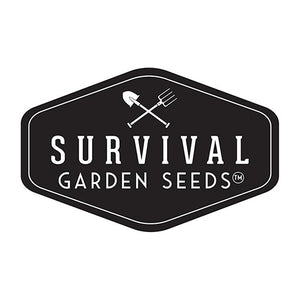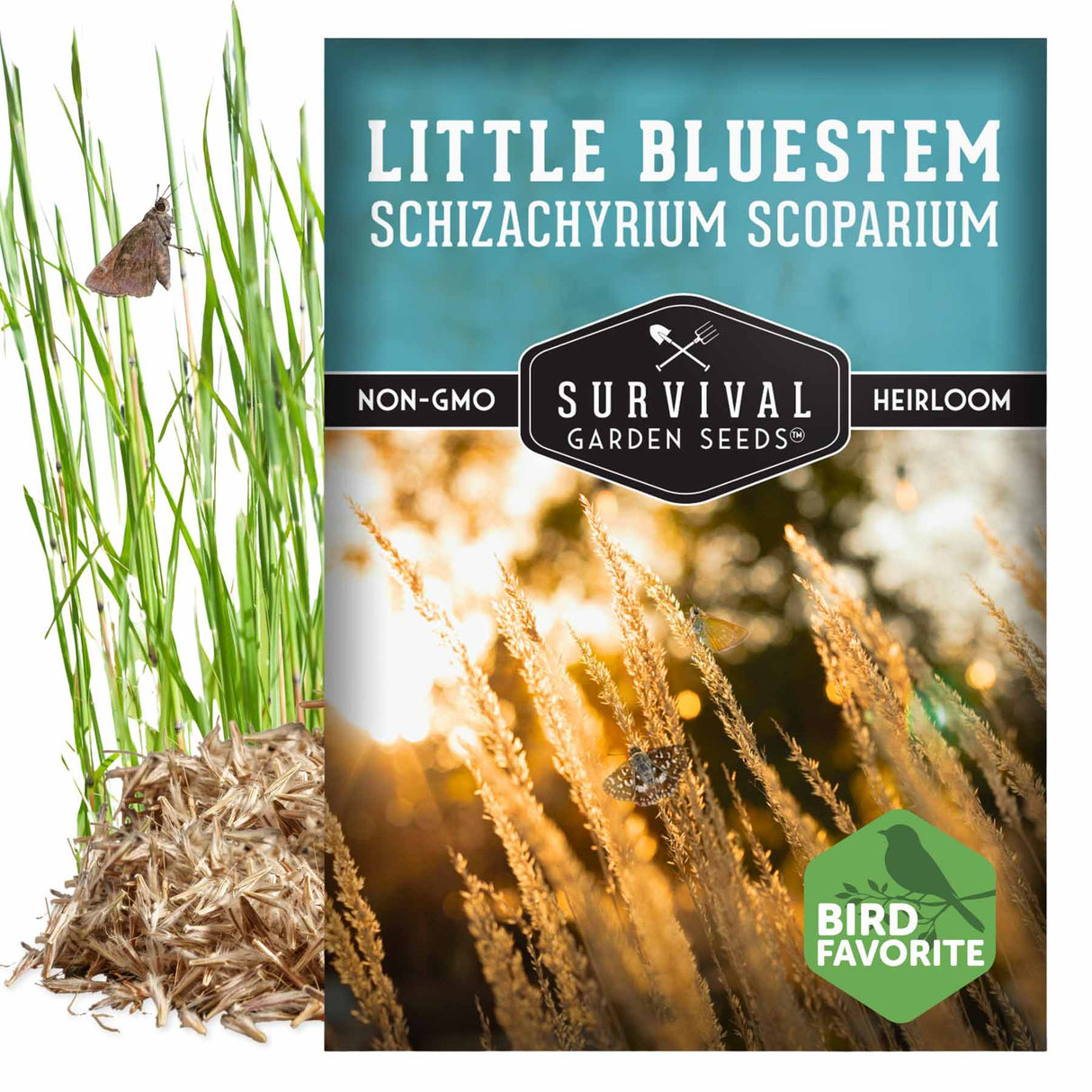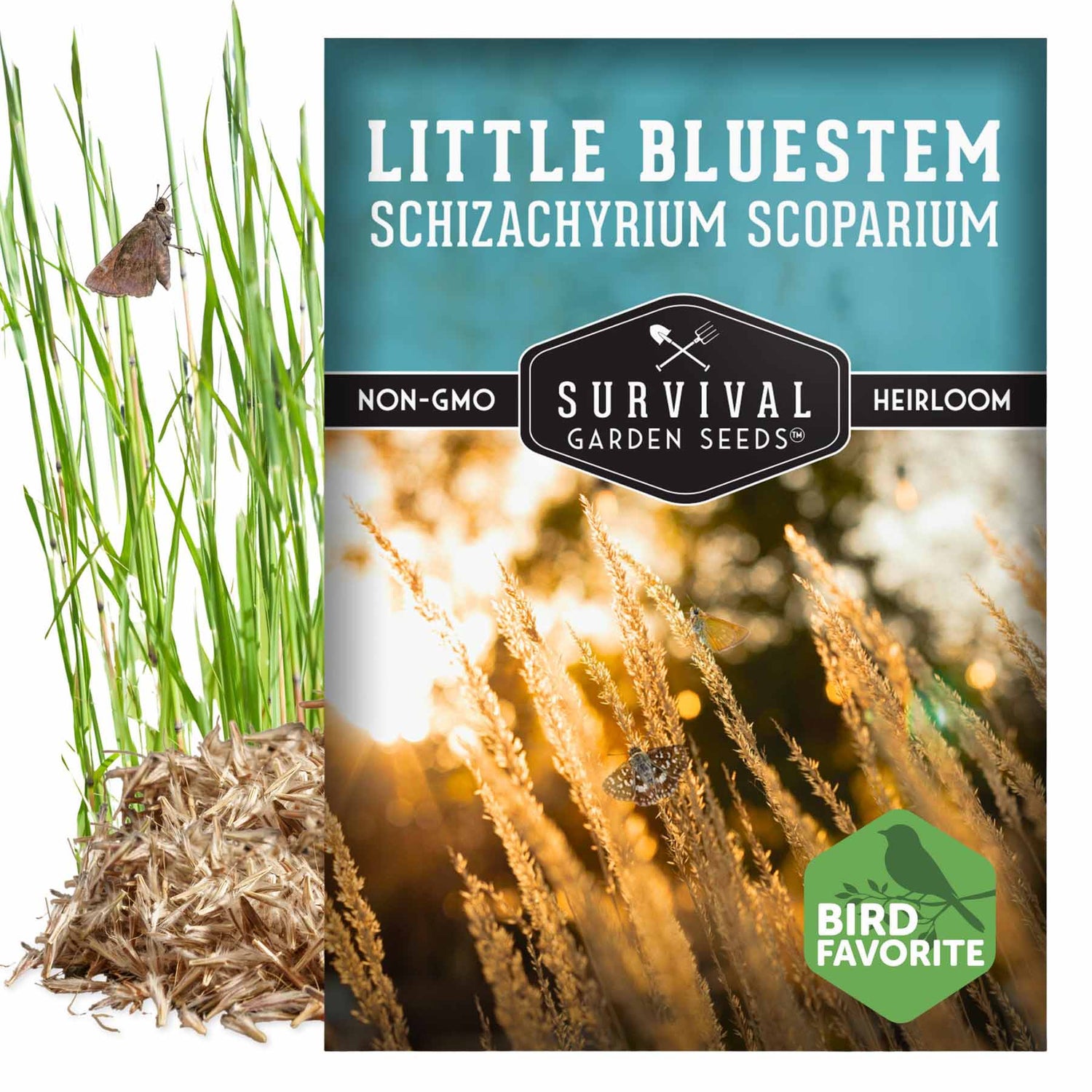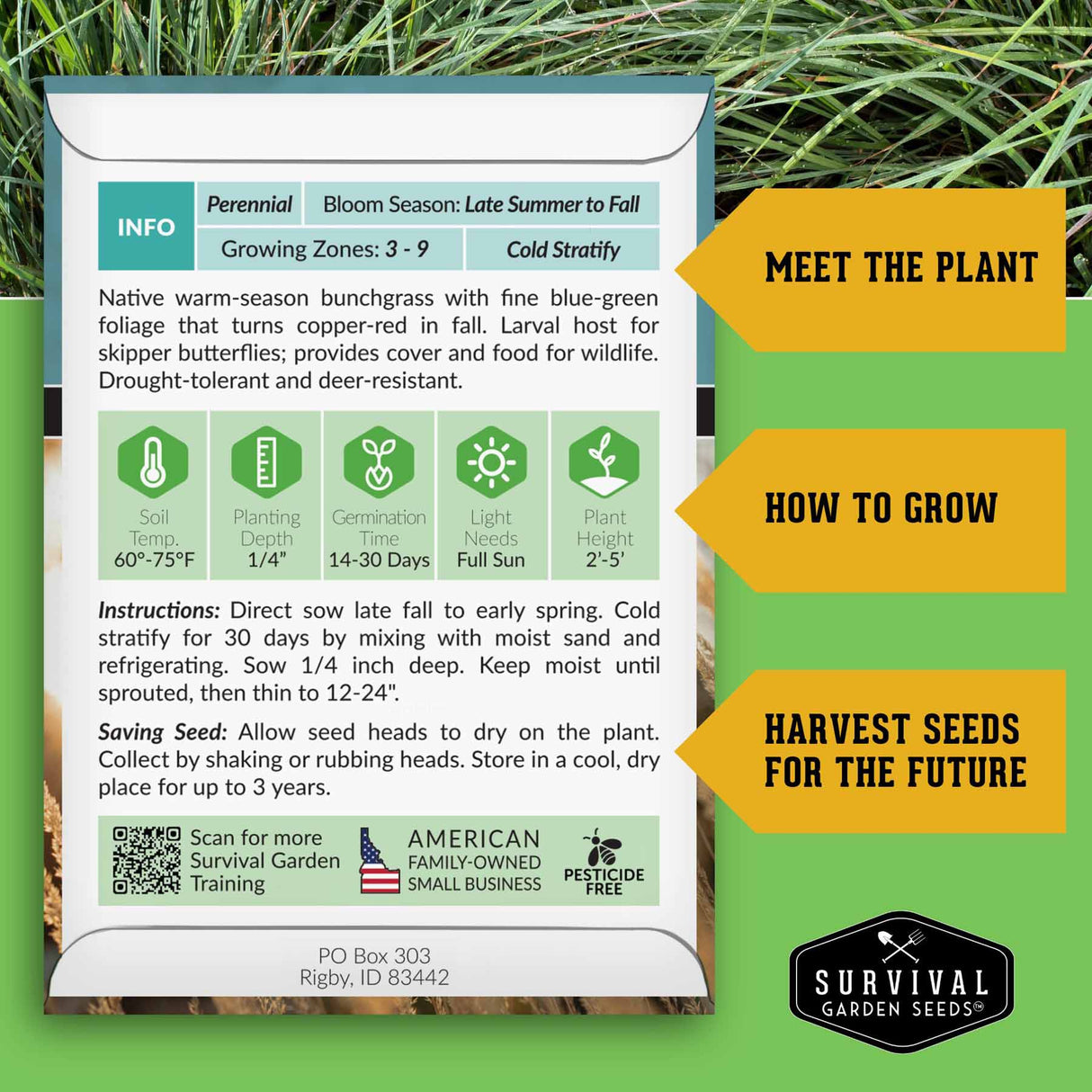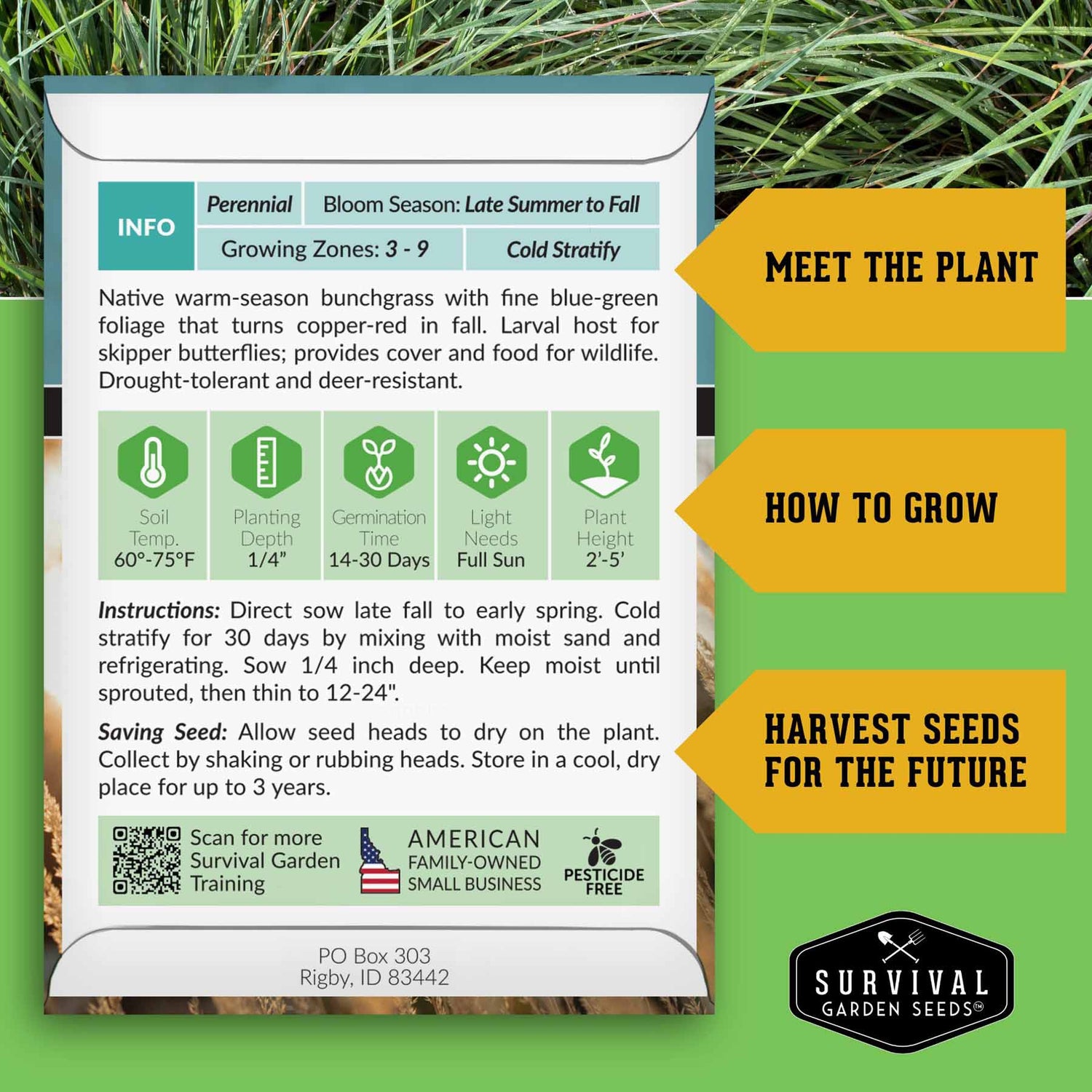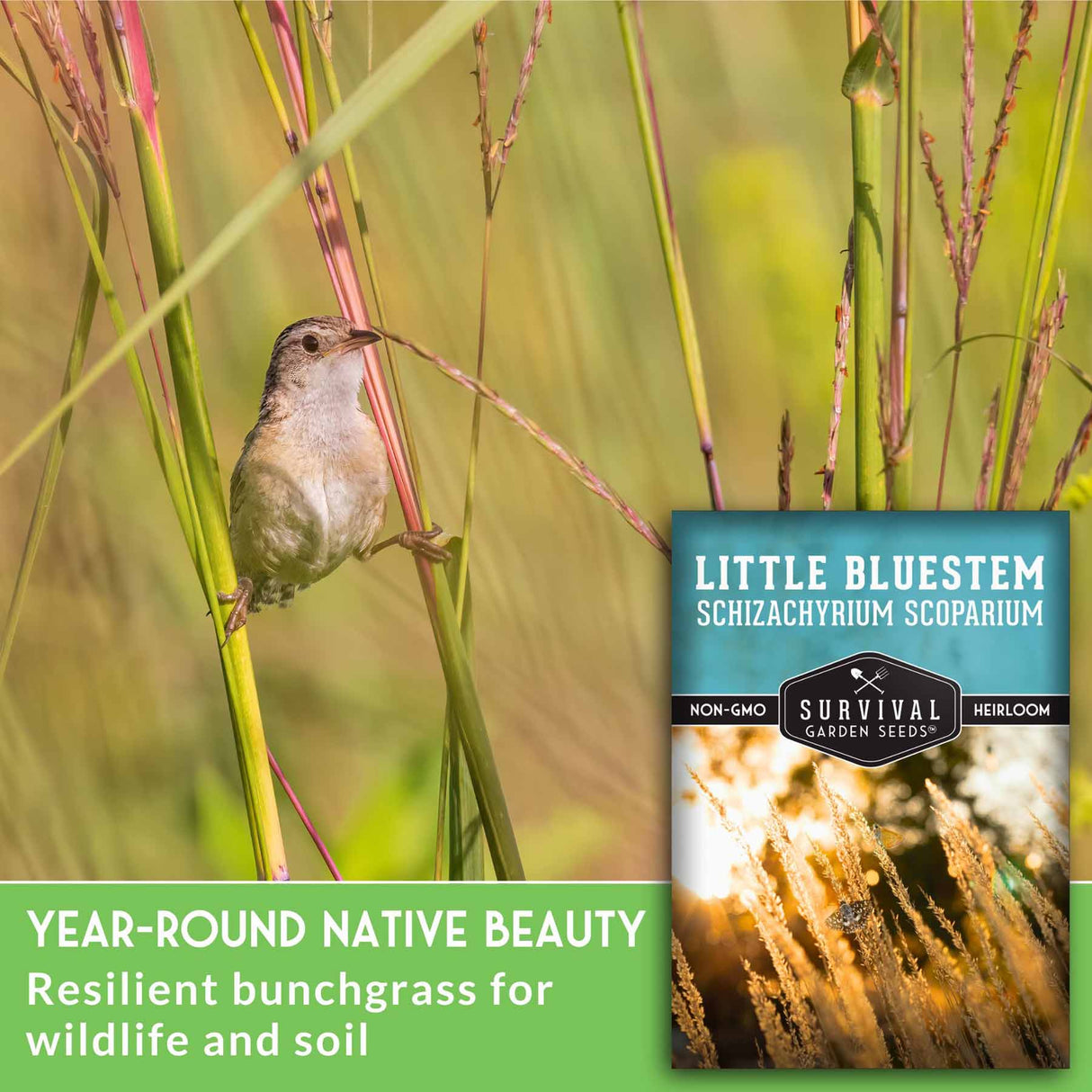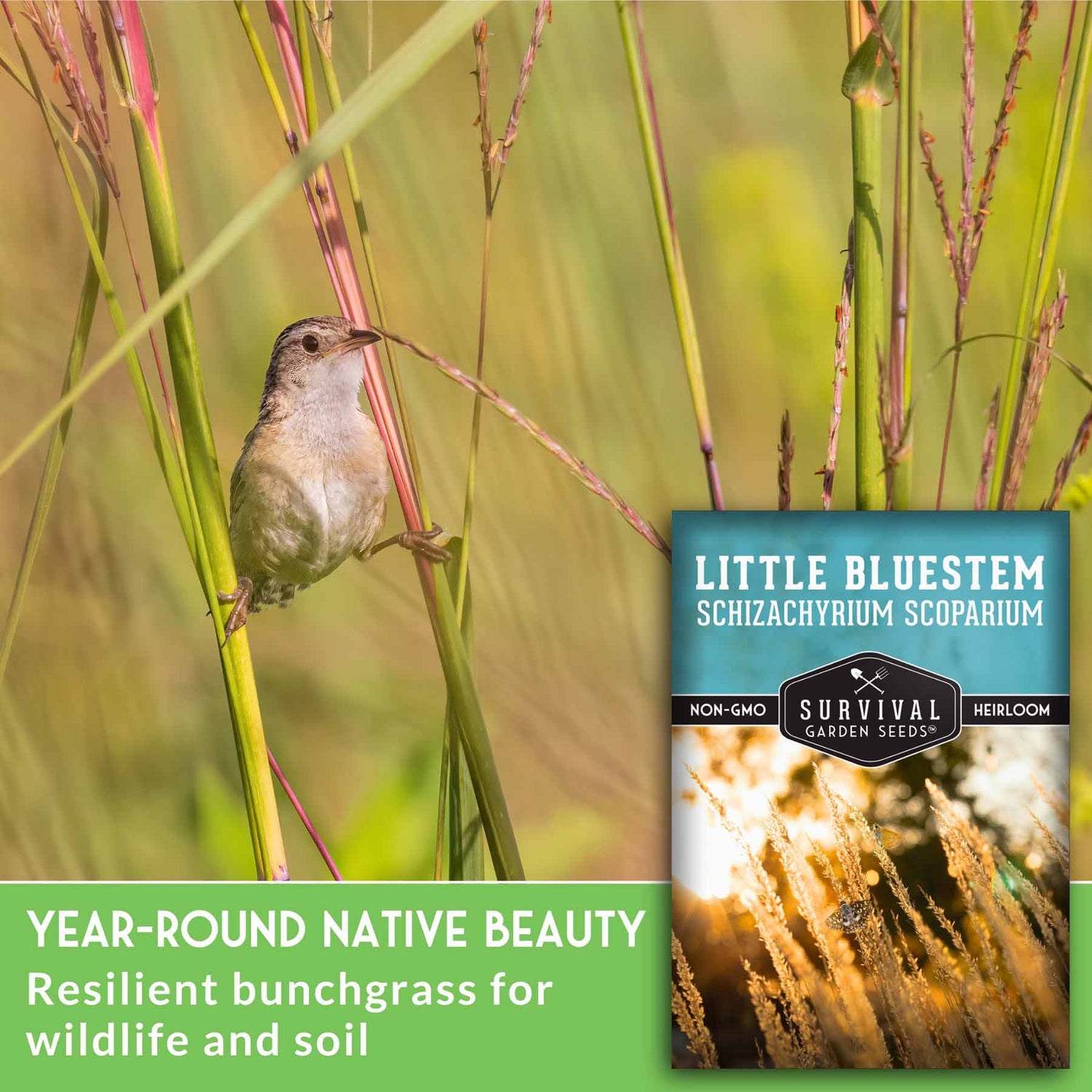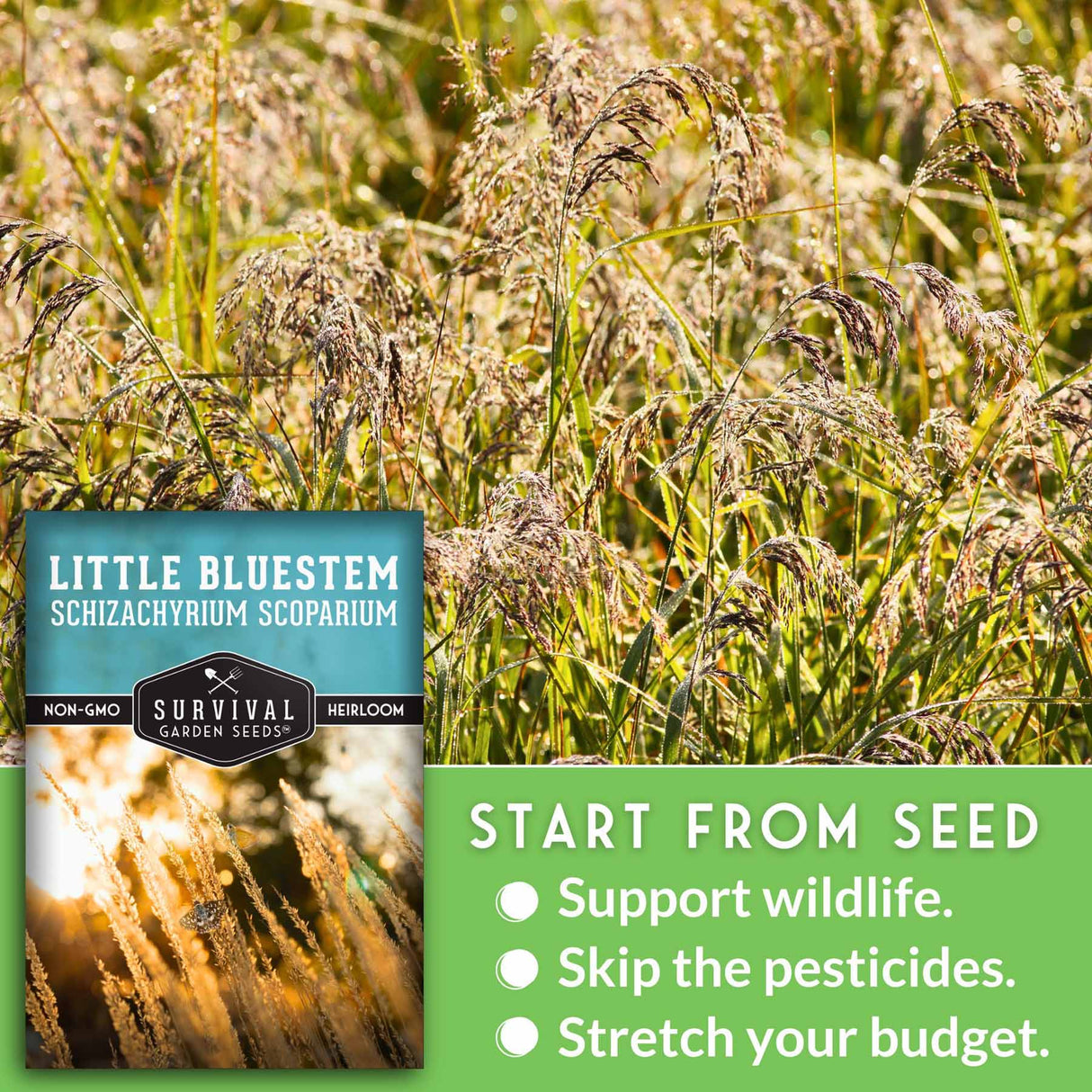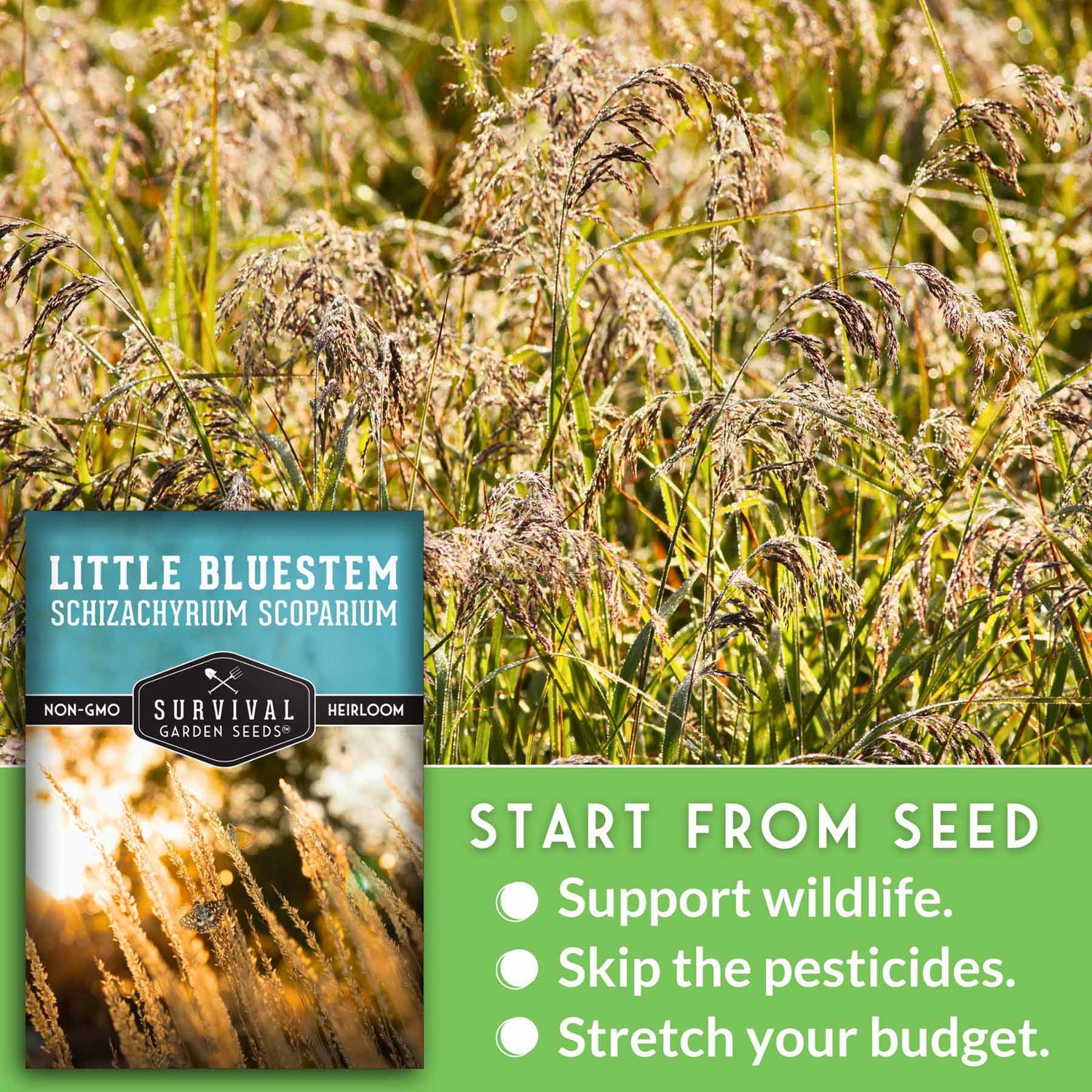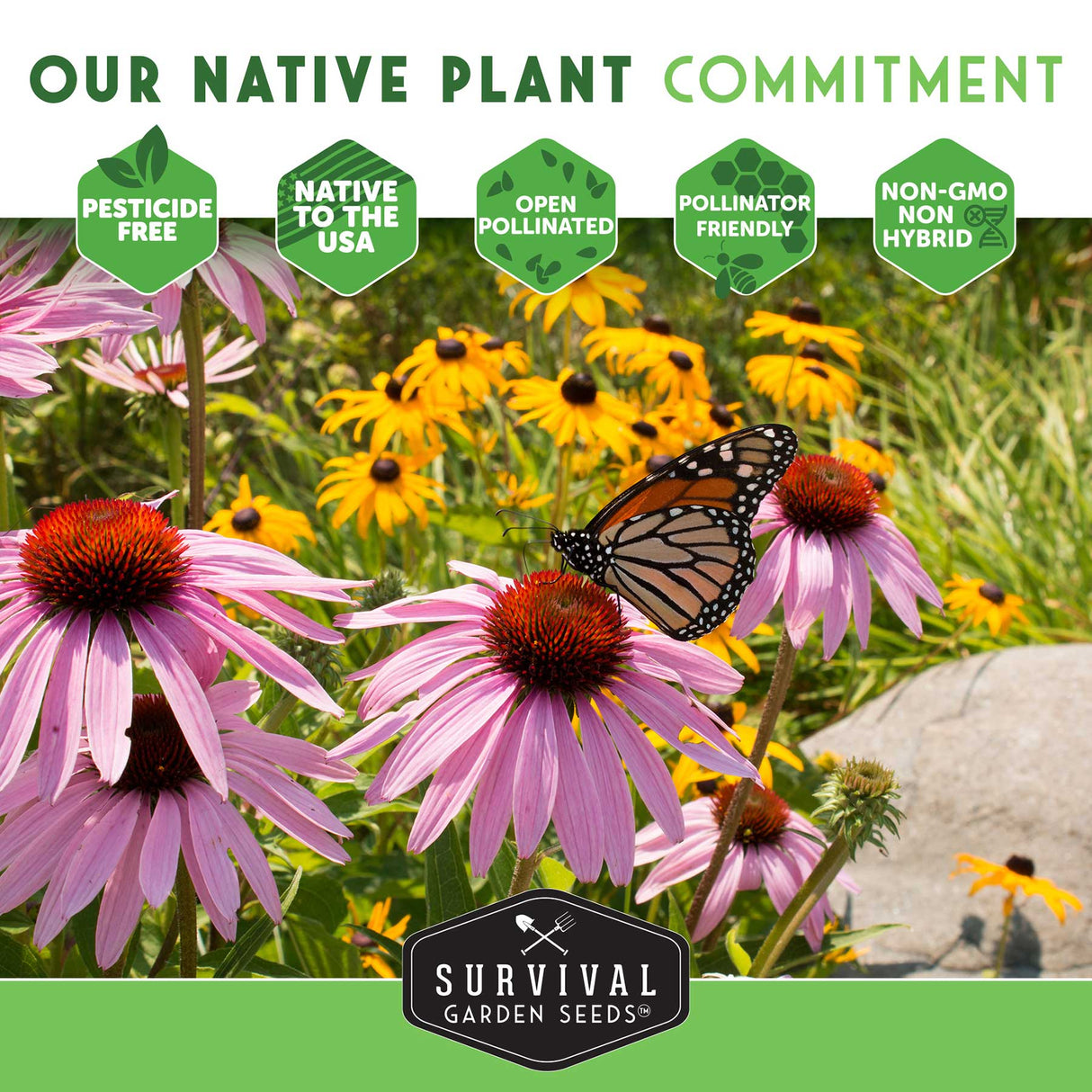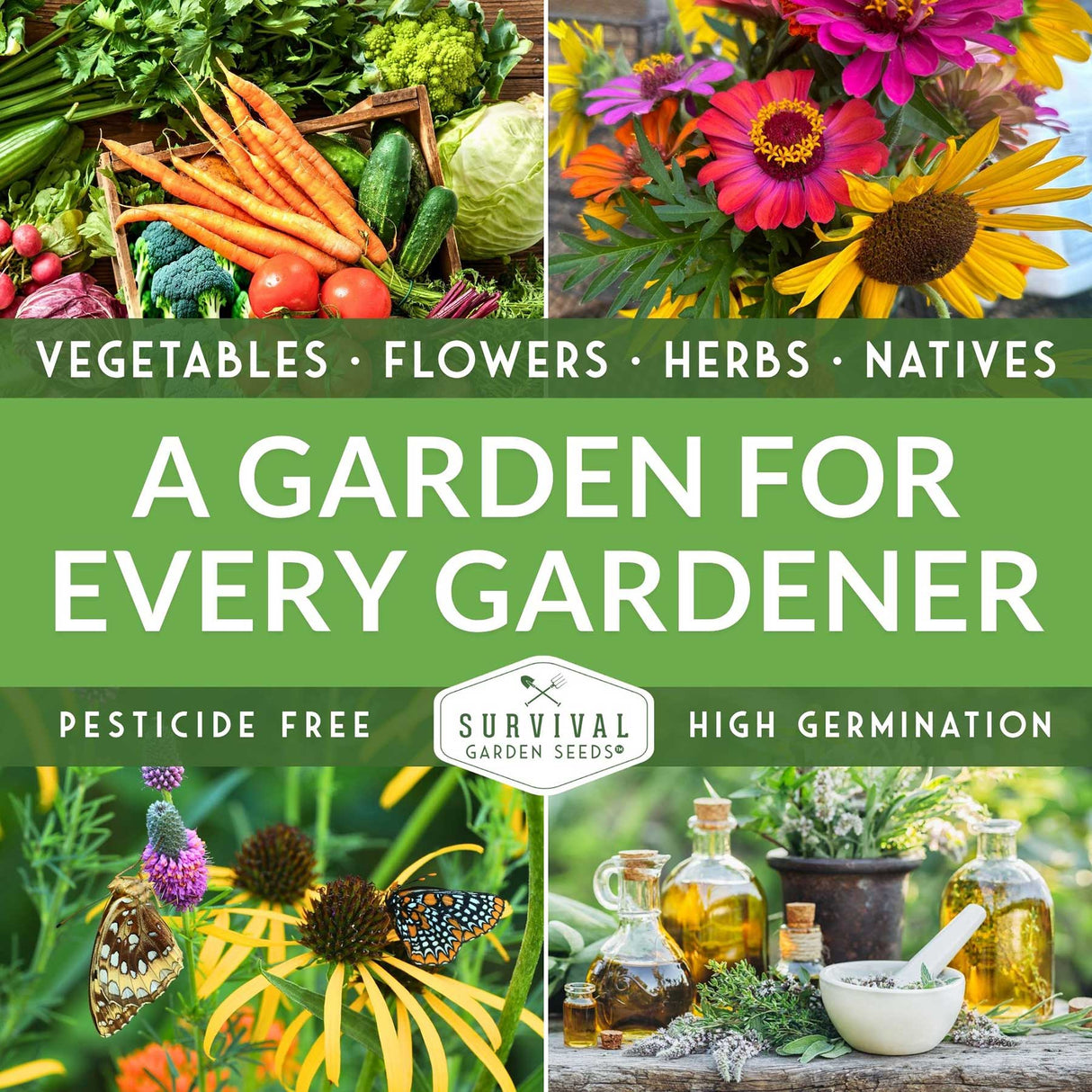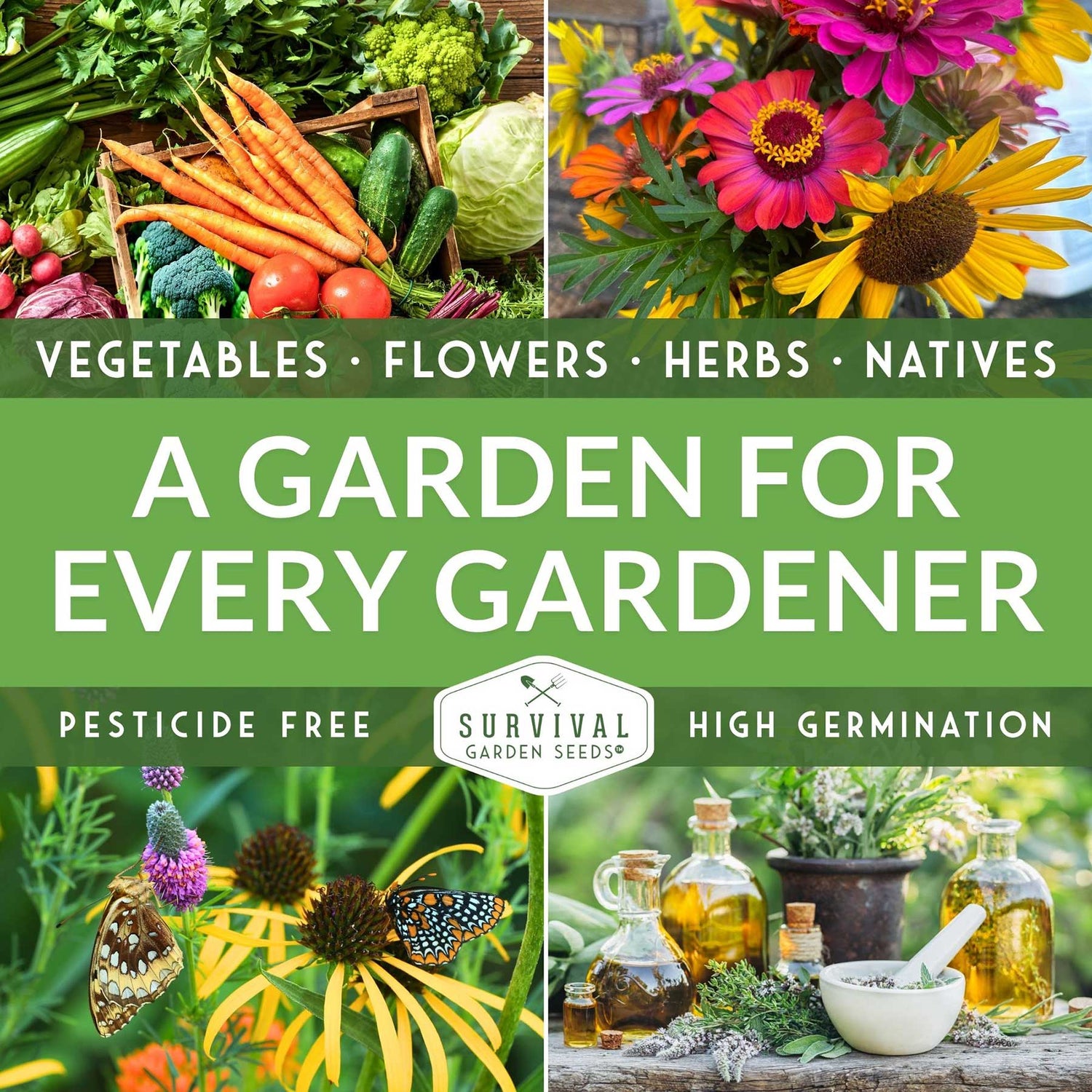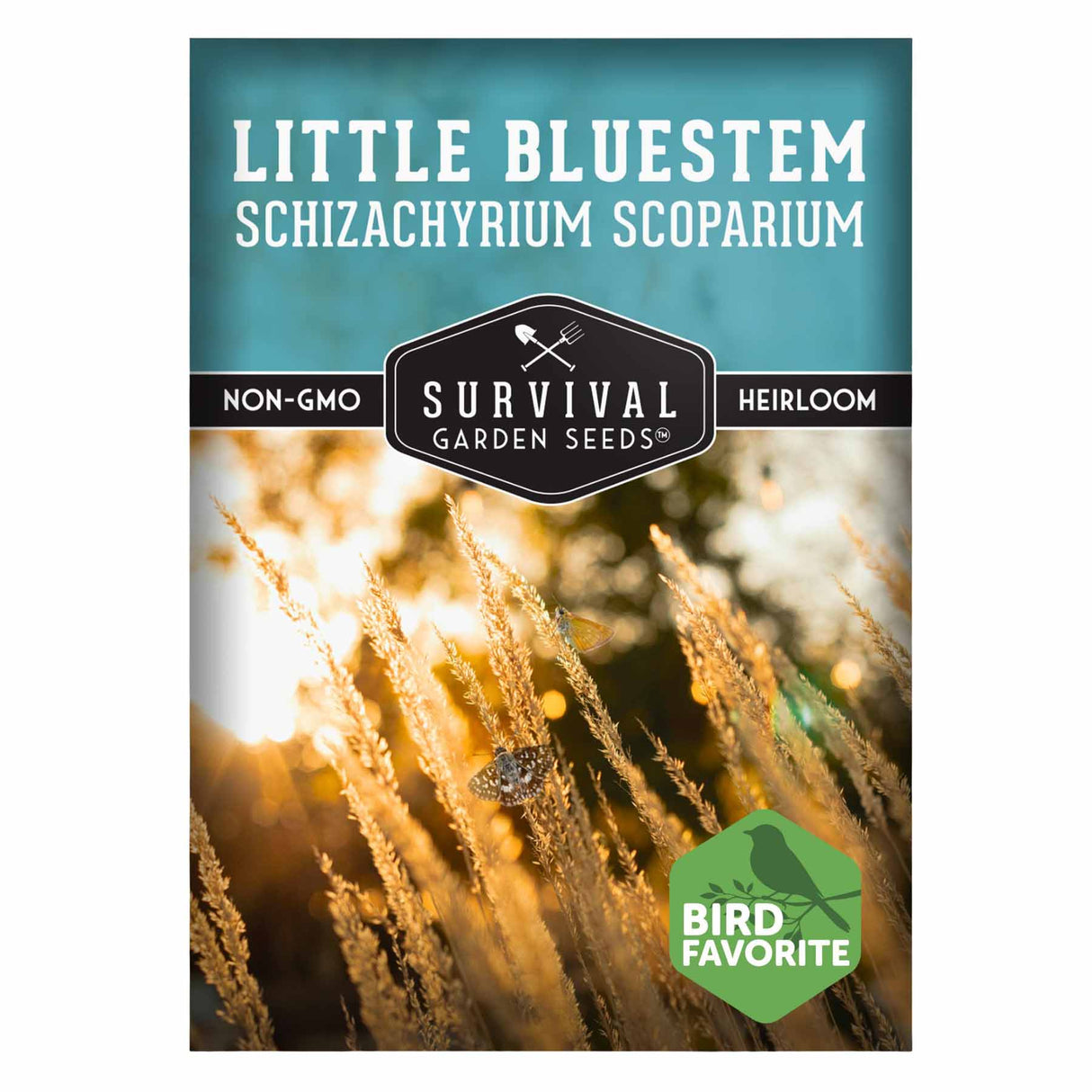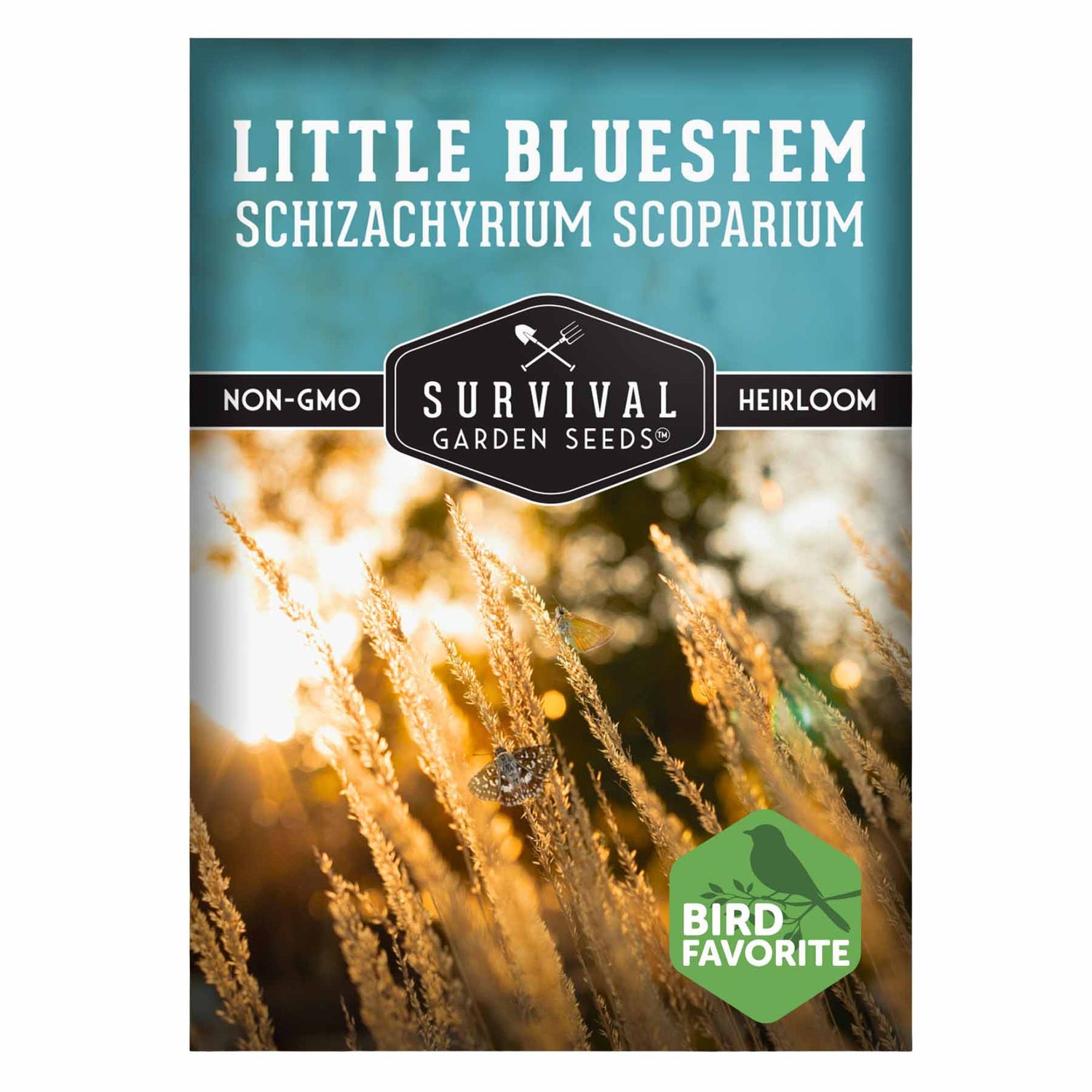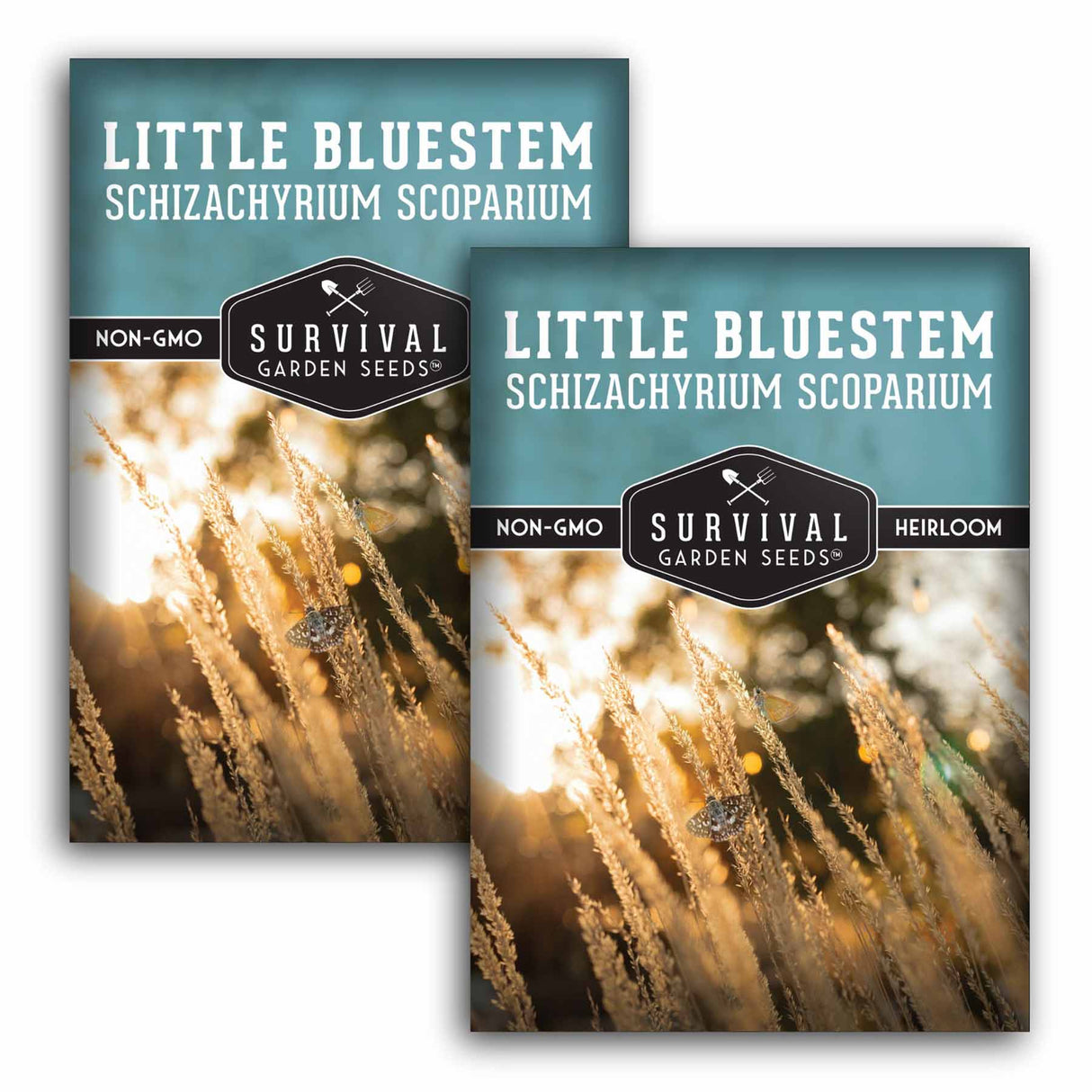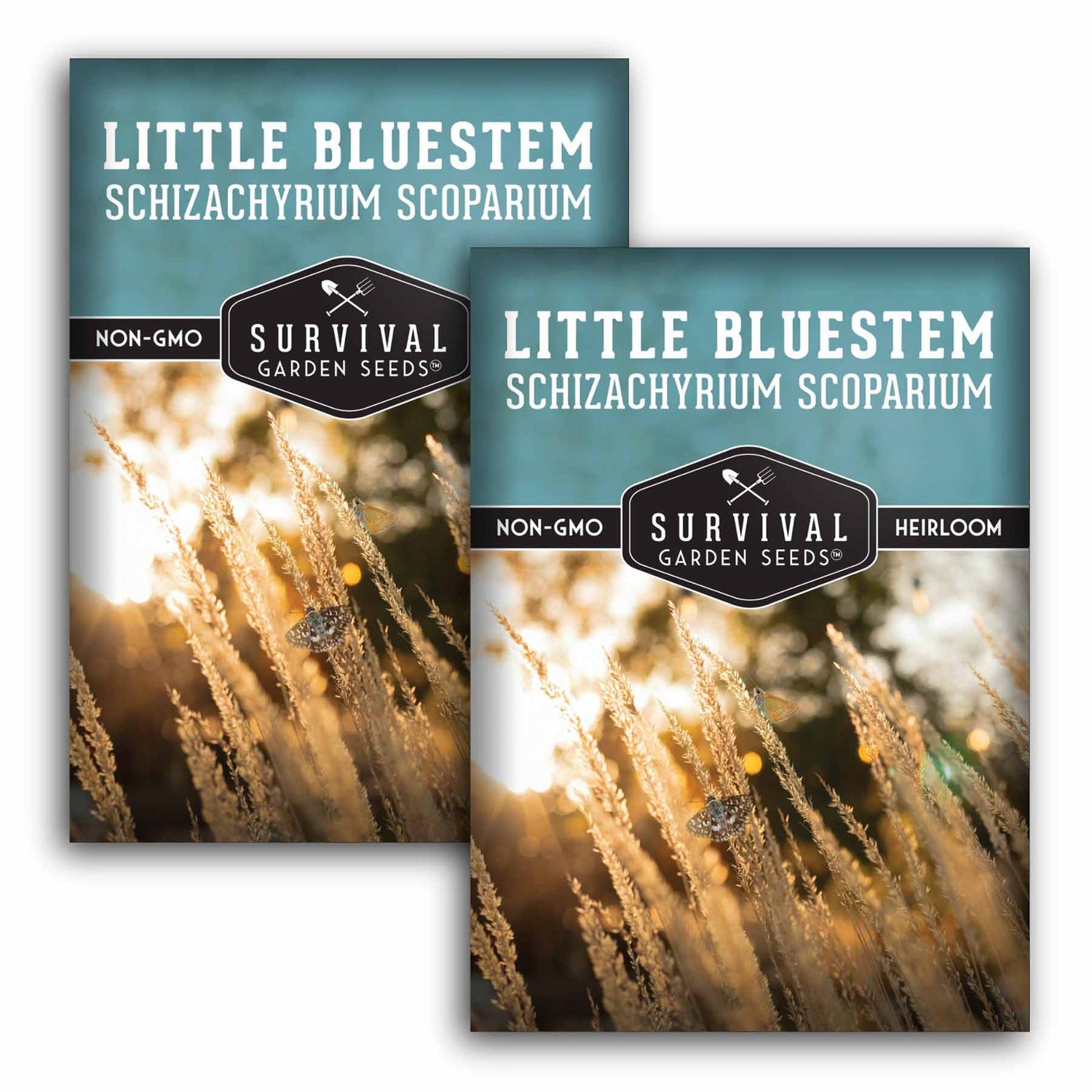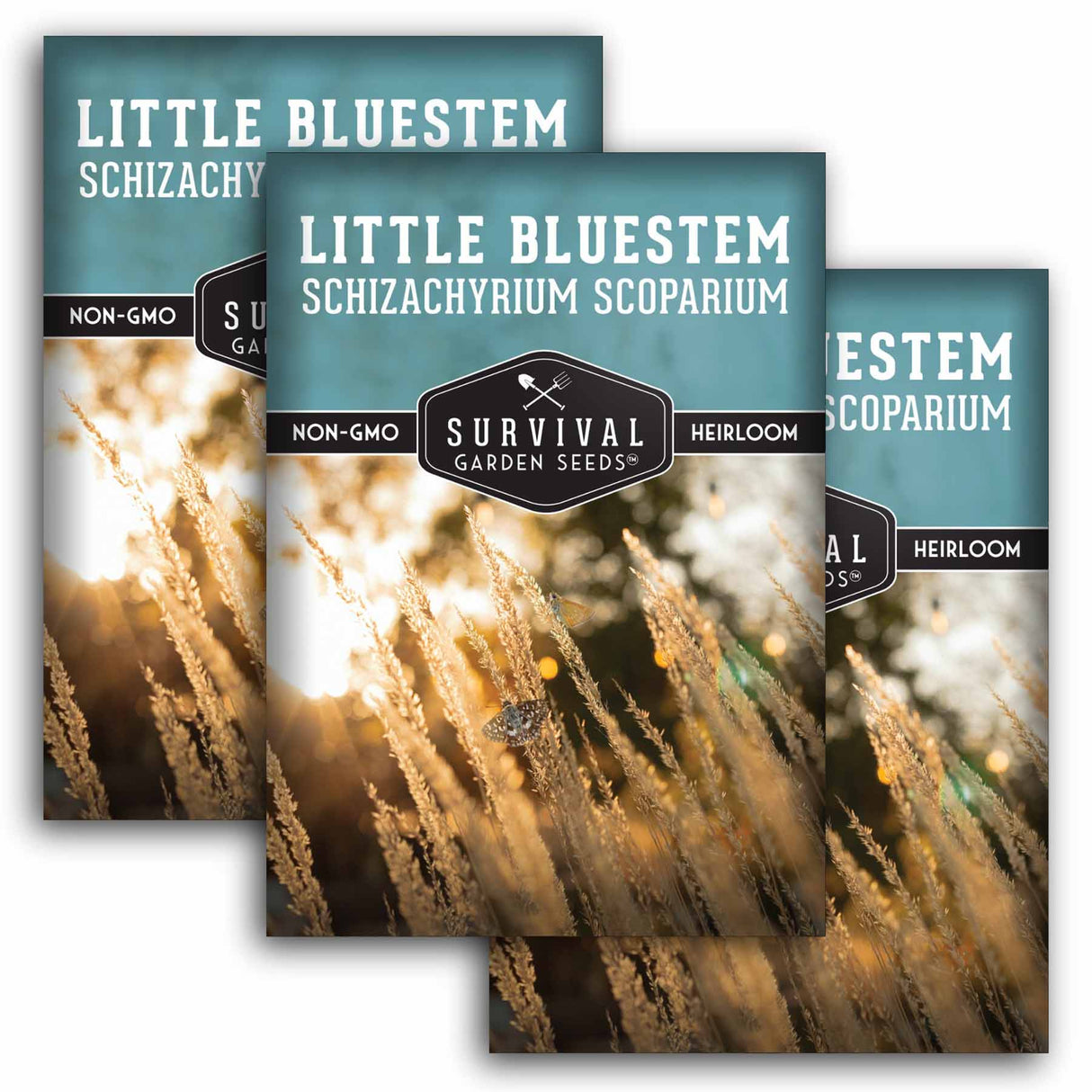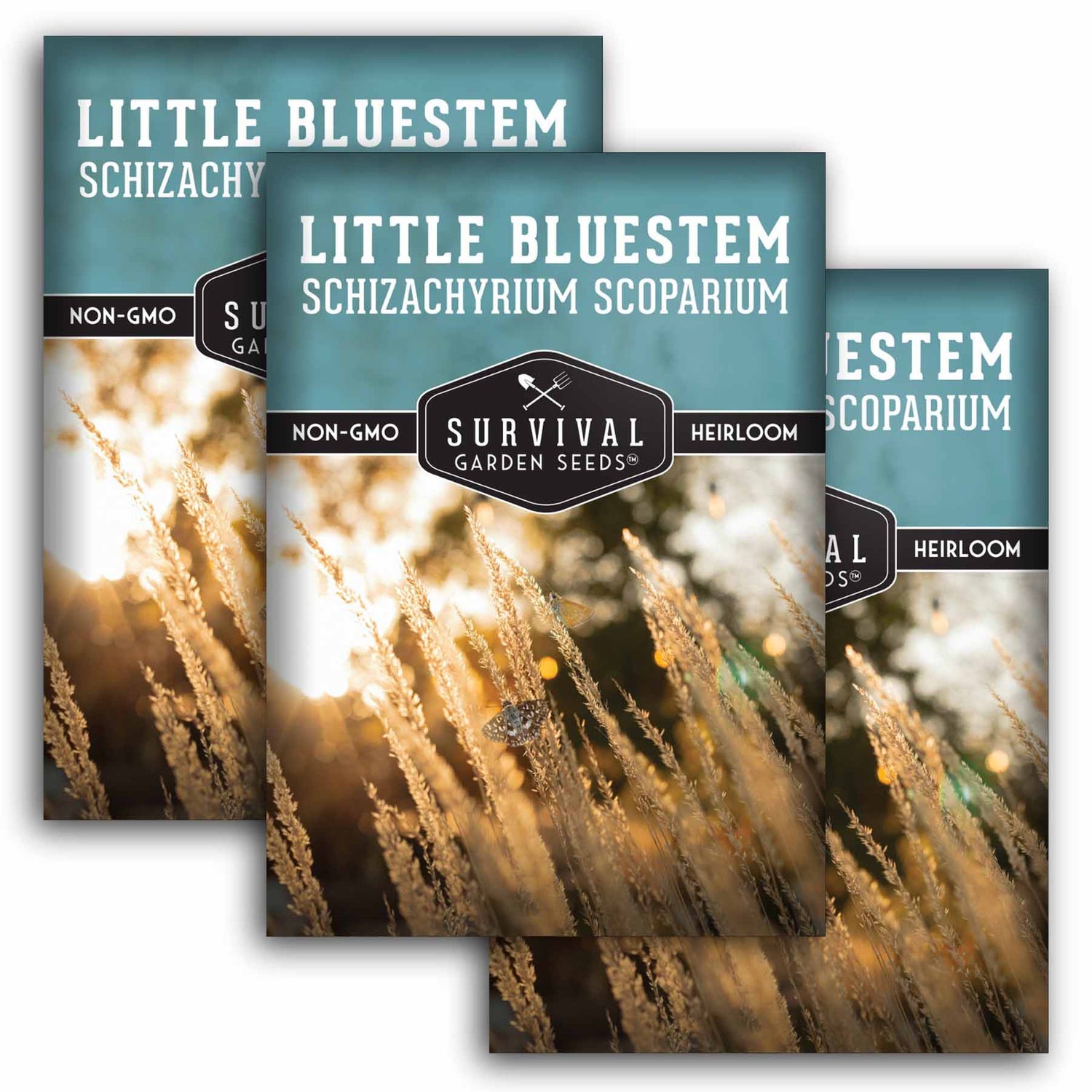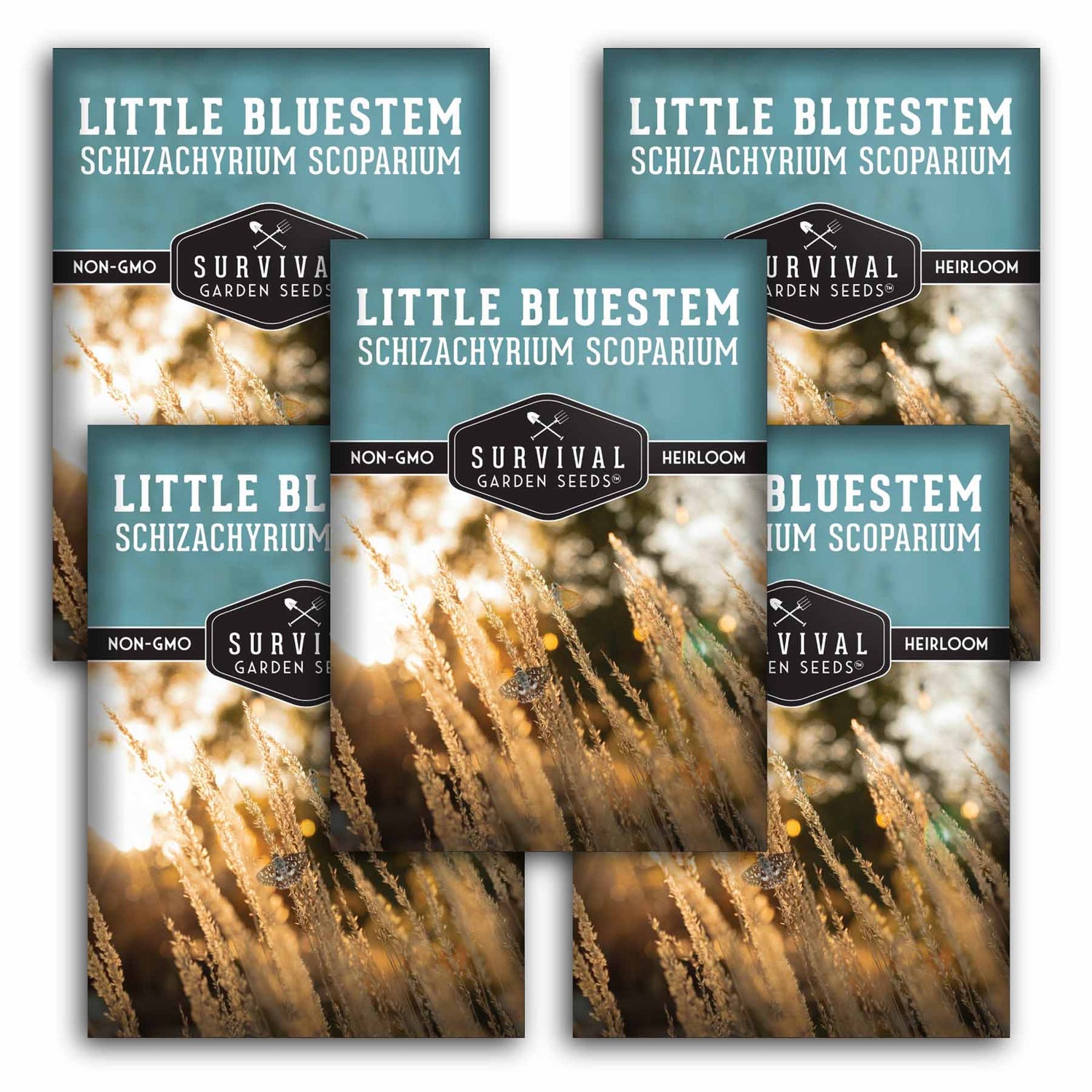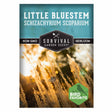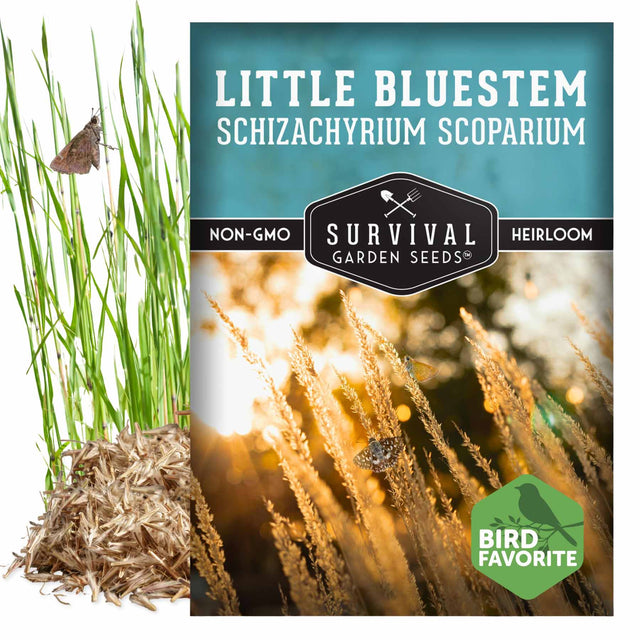Little Bluestem Grass Seed - Schizachyrium scoparium
Heirloom - Non-GMO - Reliable Germination
Little Bluestem Grass Seed - Schizachyrium scoparium - 1 Packet is backordered and will ship as soon as it is back in stock.
Couldn't load pickup availability
Little Bluestem is a landscaping favorite, transforming spaces with its elegant blue-green foliage that shifts to brilliant copper-red hues each fall. These spectacular seasonal displays persist through winter for year-round interest. This foundational prairie grass also serves as a critical larval host for nine native skipper butterfly species, including the Dakota skipper and Leonard's skipper, making it essential for supporting specialized butterfly populations that depend on native grasses for survival.
This versatile warm-season bunchgrass reaches 2-5 feet in height and establishes deep root systems that can extend 6-8 feet underground. This beauty also provides exceptional drought tolerance and soil stabilization across zones 3-9.
Cold stratification improves germination, so follow your packet to get this low-maintenance grass started. Little Bluestem thrives in diverse soil types, from sandy to clay. Once established, it forms attractive clumps that spread slowly, creating natural texture and movement while requiring very little maintenance. It's also known for excellent deer resistance.
Perfect for prairie restorations, erosion control, naturalized borders, and wildlife habitat projects, this cornerstone species offers multiple ecological benefits including soil retention, carbon sequestration, fire resistance, and winter seed production for songbirds. Create authentic prairie landscapes while supporting specialized butterfly species with this lovely North American native grass.
- Essential Butterfly Habitat - Little Bluestem serves as larval host for nine native skipper species including Dakota, Leonard's, and Ottoe skippers found nowhere else
- Stunning Seasonal Transformation - Transitions from fine blue-green summer foliage to brilliant copper-red fall color for year round interest, even in winter
- Deep-Rooted Prairie Grass - A foundation plant that develops extensive 6-8 foot root systems for exceptional drought tolerance and natural erosion control
- Remarkably Adaptable - This warm-season bunchgrass thrives in sandy, loam, or clay soils. Deer resistant and fire resilient, growing naturally in zones 3-9
- Multi-Season Wildlife Support - Produces winter seeds for songbirds while providing year-round cover and nesting habitat
Heirloom Native Plant Seeds
All of our seeds are open-pollinated, non-GMO, heirloom varieties with tested germination rates
Specifications
Specifications
-
Botanical Name
-
Seasonality
-
Planting Zones
-
Light
-
Soil Temp for Germination
-
Germination Time
-
Planting Depth
-
Plant Size
-
Growing Instructions
-
Seed Saving Instructions
-
Seed Count (approximate)
Payment & Security
Your payment information is processed securely. We do not store credit card details nor have access to your credit card information.
Support Native Habitats
- Supports Local Ecosystems and Biodiversity: Native plants are uniquely adapted to the local climate and soil conditions, forming the foundation of healthy ecosystems. They provide essential food, shelter, and breeding grounds for a wide array of native wildlife, including pollinators like bees and butterflies, birds, and beneficial insects, which helps to maintain and enhance local biodiversity.
- Requires Less Maintenance and Resources: Once established, native plants typically require significantly less water, fertilizer, and pesticides compared to non-native ornamental plants. Their deep root systems improve soil health and water penetration, reducing runoff and erosion, and their natural resistance to local pests and diseases minimizes the need for chemical interventions, saving time, money, and environmental impact.
- Contributes to Climate Resiliency and Conservation: By supporting a healthy native plant community, you are helping to create more resilient landscapes that can better withstand the impacts of climate change, such as extreme weather events. Growing native plants also plays a crucial role in conserving local plant genetics, preserving the natural heritage of a region, and providing critical habitat corridors for wildlife facing habitat loss.
- Detailed Growing Information: Paper seed packets include clear planting instructions, germination tips, and seed-saving info, great for beginner or experienced gardeners growing vegetables, herbs, flowers, or native plants.
- Trusted USA Seed Company: Family-owned business providing heirloom, non-GMO, open-pollinated seeds; always fresh, untreated, rigorously tested, and expertly packed for long-term storage and gardening success across all experience levels
Frequently Asked Questions
Are your seeds heirloom and open-pollinated?
Are your seeds heirloom and open-pollinated?
Yes. All of our seeds are heirloom, open-pollinated varieties, which means they can produce seeds that grow true to type and are suitable for seed saving.
You can learn more about open-pollinated, heirloom, and non-GMO seeds in our Survival Garden Training blog.
Are your seeds non-GMO?
Are your seeds non-GMO?
Yes. All Survival Garden Seeds are 100% non-GMO. Our seeds are open-pollinated heirloom varieties and are never genetically modified.
Are your seeds treated with chemicals?
Are your seeds treated with chemicals?
No. Our seeds are completely untreated and free from chemical coatings, fungicides, or synthetic treatments.
How do I know my seeds are fresh?
How do I know my seeds are fresh?
Every seed packet includes a packed-for date, and we germination-test each seed lot before packaging to ensure high viability.
What is the shelf life of your seeds?
What is the shelf life of your seeds?
Most seeds remain viable for 3 to 5 years or longer when stored properly in a cool, dry place away from light and moisture.
In what USDA hardiness zones can I grow your seeds?
In what USDA hardiness zones can I grow your seeds?
Our varieties are selected to grow successfully across USDA Hardiness Zones 3 through 10. Each packet includes variety-specific planting guidance and germination tips.
